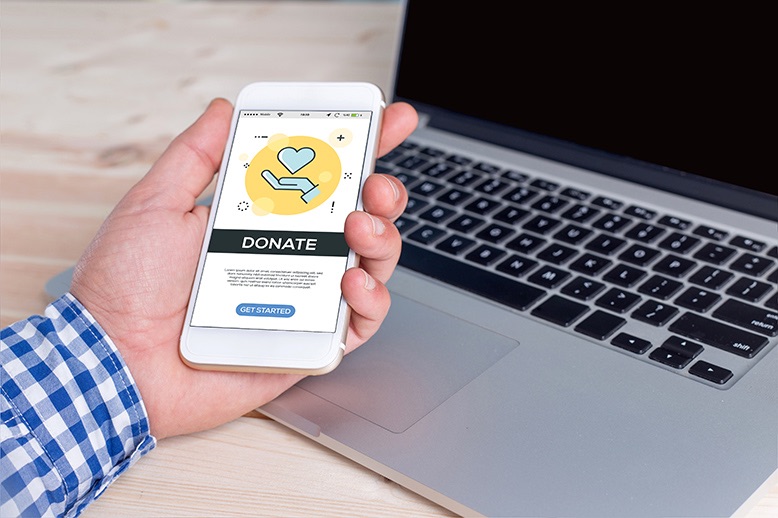Building Online Relationships with Supporters

Why Automation Isn’t Enough

Towards a Multi-Channel Engagement Strategy

You Don’t Have Time to Make Assumptions
There are plenty of clever tools readily available which can help organisations to collect and read vast amounts of data easily on one dashboard. Power BI is a powerful reporting tool which has the ability to dig deep into box office data to pull important insights for arts organisations. Working closely with the Ticketsolve Customer Success Team, New Theatre Royal Lincoln have been able to identify which of their campaigns are more successful than others and either make changes to campaigns which are not, or focus solely on campaigns which are creating results.
“We have been able to better understand peak consumer trends and identify which of our efforts are working, and which are not. I have found that it’s user-friendly functions have saved me a great deal of time and provided me with important answers to questions I once found difficult to answer”.
- Lee Newton, Sales Manager, New Theatre Royal Lincoln

Encourage Retention and Frequency
While you are encouraging the frequency of online donations and retaining your online donors, you are also developing a community of supporters for your organisation. Voluntary giving is a form of audience engagement but it’s not unusual for it to take a lot of communications before that engagement begins. Ideally once a supporter donates online to your organisation, you want to reduce the length of time until they choose to come back and donate again.
So it’s time now to set up your workflows, important conversion triggers, and smart automations. But remember, digital technology itself will not automatically enable great giving from supporters: sending clear, meaningful, and updated communications will. The digital tools can help you increase supporters' sense of participation in your story and campaign, and motivate them to continue their support.
Over the past few months, there has been a steady increase in the accessibility of digital content for online audience members with online streaming, behind the scenes and camera interviews, artist Q&A sessions, blogs, and email communications. Online donation campaigns for exclusive screenings online and adhoc donation appeals with ‘Pay What You Decide’ campaigns will form an integral stream of revenue for organisations moving forward towards reopening.
Profiling and segmenting these and other online supporters will further enhance the experience you are offering them, whether their motivations are philanthropic or benefit-led. Then by formulating a digital fundraising strategy that is adaptive and flexible, you can retain those donors and develop a current and meaningful relationship with them.
Create a Donor-Centric Experience
The online donation journey should be a donor-centric experience where, once your donors offer their support, your organisation is committed to ensuring that you meet their level of expectations. You need to define your relationships with online supporters who are committed to your cause, whether it’s contributing to your outreach project or supporting your organisation through this crisis.
It’s time to take a few moments as you plan your strategy and think like a consumer and not a fundraiser.
*The full webinar of The Current Climate for Online Donations can be viewed now on-demand.
This article first appeared in Arts Professional Magazine in June 2020
Categories
Recent posts
Archive
- December 2025 (2)
- November 2025 (1)
- October 2025 (3)
- September 2025 (1)
- August 2025 (3)
- July 2025 (3)
- June 2025 (3)
- May 2025 (4)
- April 2025 (5)
- March 2025 (5)
- February 2025 (4)
- January 2025 (4)
- December 2024 (3)
- November 2024 (5)
- October 2024 (4)
- September 2024 (7)
- August 2024 (5)
- July 2024 (3)
- June 2024 (3)
- May 2024 (3)
- April 2024 (3)
- March 2024 (4)
- February 2024 (5)
- January 2024 (3)
- December 2023 (3)
- November 2023 (4)
- October 2023 (4)
- September 2023 (5)
- August 2023 (3)
- July 2023 (4)
- June 2023 (4)
- May 2023 (5)
- April 2023 (4)
- March 2023 (4)
- February 2023 (5)
- January 2023 (4)
- December 2022 (4)
- November 2022 (3)
- October 2022 (4)
- September 2022 (5)
- August 2022 (2)
- July 2022 (4)
- June 2022 (5)
- May 2022 (4)
- April 2022 (5)
- March 2022 (3)
- February 2022 (4)
- January 2022 (4)
- December 2021 (2)
- November 2021 (3)
- October 2021 (5)
- September 2021 (4)
- August 2021 (4)
- July 2021 (3)
- June 2021 (4)
- May 2021 (2)
- April 2021 (4)
- March 2021 (5)
- February 2021 (4)
- January 2021 (5)
- December 2020 (4)
- November 2020 (4)
- October 2020 (5)
- September 2020 (5)
- August 2020 (4)
- July 2020 (7)
- June 2020 (5)
- May 2020 (5)
- April 2020 (5)
- March 2020 (8)
- February 2020 (4)
- January 2020 (5)
- December 2019 (3)
- November 2019 (5)
- October 2019 (4)
- September 2019 (4)
- August 2019 (5)
- July 2019 (4)
- June 2019 (4)
- May 2019 (5)
- April 2019 (4)
- March 2019 (4)
- February 2019 (3)
- January 2019 (5)
- December 2018 (4)
- November 2018 (8)
- October 2018 (2)
- September 2018 (3)
- August 2018 (5)
- July 2018 (4)
- June 2018 (4)
- May 2018 (1)
- April 2018 (1)
- March 2018 (3)
- February 2018 (2)
- December 2017 (2)
- November 2017 (3)
- October 2017 (4)
- September 2017 (2)
- August 2017 (1)
- July 2017 (5)
- June 2017 (3)
- May 2017 (2)
- April 2017 (3)
- March 2017 (2)
- February 2017 (3)
- January 2017 (3)
- December 2016 (4)
- November 2016 (1)
- September 2016 (1)
- July 2016 (3)
- June 2016 (1)
- May 2016 (2)
- April 2016 (2)
- February 2016 (1)
- January 2016 (3)
- December 2015 (2)
- September 2015 (1)
- August 2015 (2)
- July 2015 (1)
- June 2015 (2)
- May 2015 (2)
- April 2015 (5)
- March 2015 (2)
- February 2015 (2)
- January 2015 (4)
- December 2014 (3)
- November 2014 (3)
- October 2014 (2)
- September 2014 (3)
- August 2014 (3)
- July 2014 (3)
- June 2014 (7)
- May 2014 (6)
- April 2014 (3)
- March 2014 (2)
- February 2014 (1)
- January 2014 (3)
- December 2013 (1)
- August 2013 (1)
- June 2013 (1)
- April 2013 (1)
Sign up for regular updates


